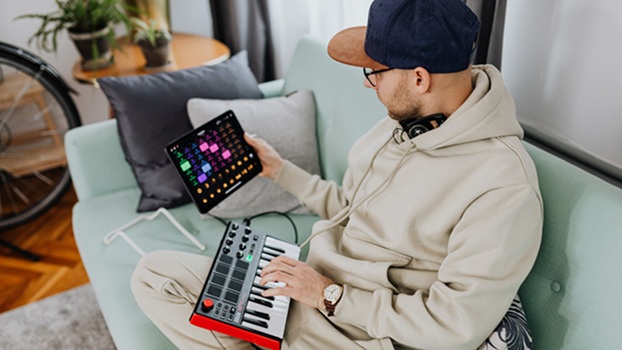Great samples aren’t just hiding in vintage records—they’re everywhere: your street, your kitchen, your inbox, your phone. The trick is building a repeatable process that turns raw noise into musical, mix-ready assets. Here’s a practical playbook to turn everyday sounds into signature bangers.
1) Field Recording: Capture with Intent
Start by defining a theme (e.g., “metallic rhythms,” “urban birds and brakes,” “kitchen percussion”). Record 10–20 minutes per location so you can mine variations later.
- Mobile setup: Phone memo app + a small windscreen (even a sock helps).
- Markers: Clap loudly when something interesting happens; the transient makes it easy to find in the waveform.
- Stereo tricks: Walk past the sound source to create natural Doppler effects for risers and swells.
Turn it into music: Slice the best hits into a drum kit (transients only), then stretch sustained noises into pads. A hiss or HVAC drone, low-passed and looped with crossfades, becomes instant ambience.
2) Kitchen Kit: The Cheapest Drum Library You’ll Ever Make
Utensils are full of pitch and character.
- Snares: Tupperware lids, notebooks slapped by fingers, or a colander tapped with a wooden spoon.
- Kicks: Mic the inside of an empty cardboard box; add a low sine at 50–60 Hz sidechained to the transient.
- Hi-hats: Rice shaken in a jar; automate a high-pass filter to mimic open/closed states.
Layer with subtle saturation and short room reverb to glue the kit into a believable “space.”
3) Contact Mic Sorcery
A contact mic reveals vibrations you can’t hear in the air: fence wires, radiator panels, guitar bodies, bicycle frames. Record scrapes and taps, then:
- Make basses: Pitch down metallic scrapes 12–24 semitones, low-pass at 120 Hz, compress gently, and add chorus for width.
- Make FX: Reverse a bowed spring, add reverb, and bounce it as a whoosh or cinematic riser.
4) Granular Alchemy: From Trash to Texture
Granular engines can turn a two-second click into a lush pad.
- Recipe: Drop a tiny fragment into a granular synth, set grain size 50–120 ms, moderate jitter, and smear with reverb.
- Motion: Automate position scanning to reveal evolving harmonics; map a slow LFO to size/density for living textures.
5) Convolution Reverb as a Sampler
Most use convolution to load impulse responses of rooms. Instead, feed it with objects.
- Non-room IRs: Coins, soda cans, pops, or mouth clicks as impulse sources.
- Result: The reverb “prints” the object’s fingerprint on your synths and drums. Instant weirdness that still feels cohesive.
6) Resampling as a Discipline
Bounce often and re-import. Every resample step is a chance to commit to tone.
- Drum workflow: Program a simple loop → saturate → bounce → re-EQ and slice again for punchy, unified drums.
- Vocal chops: Record nonsense vowels, tune to key, chop into a sampler, and sequence as a lead. Add formant shifting for identity.
7) Re-amping: Put Sounds in Real Space
Play your samples through a speaker into a stairwell, bathroom, or car interior, then re-record with a mic or your phone.
- Tight glue: Small rooms add early reflections that make samples sit together.
- Lo-fi magic: A cheap Bluetooth speaker + phone mic creates a “cassette-radio” vibe—perfect for intros and breakdowns.
8) Rhythm from Non-Rhythmic Sources
Turn ambience into grooves with transient detection and noise-gating.
- Gate the world: Set a fast gate keyed to a simple 1/8-note trigger so a city drone pulses rhythmically.
- Envelope followers: Use an envelope follower on crowd noise to modulate filter cutoff on a synth bass—instant, responsive movement.
9) Pitch, Key, and Harmony
Found sounds become musical when they respect your song’s key.
- Tuner first: Detect pitch on longer samples, then nudge with a pitch shifter.
- Chord snacks: Build one-shots at the root, fifth, and octave; map them to pads and stack for quick chord voicings.
10) Legal & Clean: Clear or Create
If you’re sampling copyrighted recordings, get clearance—or avoid it by recording original sources.
- DIY vocals: Sing, speak, or whisper your own phrases, then warp into chops.
- Public-domain/CC: If you pull from open libraries, read the license and include attribution when required.
11) Build Your “Signature Pack”
As you create, curate.
- Folders: Kicks, snares, hats, textures, FX, vox, tonal loops.
- Names: Include BPM, key, and a tag (e.g., “k_woodbox_50Hz,” “pad_trainIR_Gm_100”).
- Versioning: Keep a changelog (“v1.2 added kitchen hats; normalized all kicks to -3 dBFS”).
12) Mix Moves that Sell the Illusion
Found sounds can be spiky or thin; mix with intention.
- Parallel saturation to reveal harmonics.
- Transient shaping to tighten homemade drums.
- Multi-band compression to tame cheap-mic harshness (2–4 kHz) while preserving air above 10 kHz.
Sampling is a mindset: listen first, capture often, and commit quickly. The goal isn’t pristine fidelity; it’s identity. If you want to sharpen these skills in a structured way, explore electronic music production classes that emphasize field recording, sound design, and resampling workflows. Then take this toolkit outside—down the block, into your kitchen, across a parking garage—and come back with the raw material for your next signature sound.




